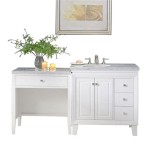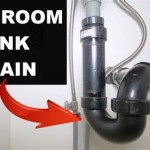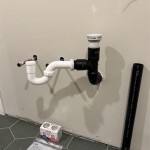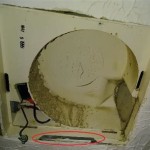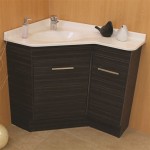American Standard Bathroom Sink Faucet Manual: A Comprehensive Guide
American Standard bathroom sink faucets are renowned for their durability, design, and functionality. Correct installation and maintenance are crucial to ensure optimal performance and longevity. The American Standard bathroom sink faucet manual serves as an indispensable guide for homeowners and plumbers alike, offering detailed instructions, troubleshooting tips, and essential information related to the specific faucet model. This article delves into the key components of the American Standard bathroom sink faucet manual, providing a comprehensive overview of installation procedures, maintenance requirements, and troubleshooting common issues.
Understanding the American Standard Bathroom Sink Faucet Manual Structure
An American Standard bathroom sink faucet manual is typically structured to guide the user through various stages, encompassing unpacking, installation, operation, maintenance, and troubleshooting. The manual begins with a detailed list of components included in the faucet package. This ensures that all necessary parts are present before commencing the installation process. A diagram illustrating each part, labeled with corresponding names and part numbers, is generally provided. This visual aid helps in identifying each component and understanding its role in the overall assembly. Furthermore, the manual includes safety precautions that must be observed to prevent injury and damage during installation and maintenance. These precautions often include turning off the water supply before starting any work, wearing appropriate safety gear, and handling tools with care.
The installation section forms the core of the manual. It provides step-by-step instructions, often accompanied by illustrations or diagrams, outlining the entire installation process. This begins with preparing the sink area, which includes cleaning the sink deck and ensuring the faucet mounting holes are the correct size and configuration. The manual then explains how to connect the water supply lines, including the hot and cold water connections, and how to properly seal the faucet to the sink deck to prevent leaks. The manual also details how to install the drain assembly, which includes the pop-up drain mechanism and the drain pipe connections. Proper installation of the drain assembly is critical for ensuring efficient water drainage and preventing leaks in the drain system. Typically, torque specifications for tightening various connections are provided to prevent overtightening, which could damage the faucet or cause leaks.
Beyond installation, the manual usually provides basic operational instructions, describing how to use the faucet to control water flow and temperature. This section is particularly useful for users unfamiliar with the specific features of the faucet model. A maintenance section outlines recommended cleaning procedures and preventative measures to prolong the life of the faucet. Regular cleaning is recommended to remove mineral deposits and prevent build-up that can affect water flow and faucet operation. The manual often recommends using specific cleaning products that are safe for the faucet finish and internal components. The manual may also provide instructions for lubricating certain parts to ensure smooth operation.
Finally, the manual offers a troubleshooting section that addresses common problems such as leaks, low water pressure, and noisy operation. This section provides diagnostic steps to identify the cause of the problem and offers potential solutions. If the troubleshooting guide does not resolve the issue, the manual typically advises contacting American Standard customer service for further assistance.
Key Installation Procedures Outlined in the Manual
The installation process, as detailed in the American Standard bathroom sink faucet manual, involves several key steps that must be executed correctly to ensure proper functionality and prevent leaks. First, the water supply must be shut off at the source. Usually, there are shut-off valves located beneath the sink. These valves should be turned off completely before any installation work begins. Next, the old faucet and drain assembly must be removed. This typically involves disconnecting the water supply lines, loosening the mounting nuts that secure the faucet to the sink deck, and disconnecting the drain pipes. Extreme care should be taken during this process to avoid damaging the sink or existing plumbing.
After removing the old faucet, the sink deck should be thoroughly cleaned to remove any debris or old sealant. The new faucet can then be installed, following the specific instructions in the manual. This usually involves inserting the faucet body through the mounting holes in the sink deck and securing it from below using mounting nuts and washers. The water supply lines are then connected to the faucet inlets, ensuring that the hot and cold water lines are connected to the correct inlets. Flexible supply lines are often used to facilitate the connection. It is important to use Teflon tape or pipe dope on the threads of the water supply connections to prevent leaks. The connections should be tightened securely, but not overtightened, to avoid damaging the faucet or supply lines.
The drain assembly is then installed, typically consisting of the drain flange, drain body, and pop-up drain mechanism. The drain flange is inserted into the drain opening in the sink and sealed with plumber's putty or silicone sealant to prevent leaks. The drain body is then attached to the drain flange from below the sink, and the pop-up drain mechanism is connected to the drain body. The drain pipe is then connected to the drain body, using appropriate fittings and seals. The pop-up drain mechanism is then adjusted to ensure proper operation, allowing the drain to be opened and closed smoothly. After the installation is complete, the water supply should be turned back on slowly to check for leaks. If any leaks are detected, the connections should be tightened further or re-sealed as necessary.
Troubleshooting Common Problems with the Manual's Guidance
American Standard bathroom sink faucet manuals commonly include a section dedicated to troubleshooting frequent issues. One of the most common problems is dripping or leaking. The manual often suggests checking the O-rings and cartridges within the faucet for wear or damage. Replacing these components can often resolve the leaking issue. The manual may also include specific part numbers for replacement parts to ensure the correct components are ordered.
Another common issue is reduced water flow. The manual may suggest cleaning the aerator, which is the screen-like device at the end of the faucet spout. Mineral deposits can build up in the aerator, restricting water flow. Removing the aerator and cleaning it with a brush or soaking it in vinegar can often restore water flow. The manual might also indicate that the problem could be with the water supply lines, suggesting checking for kinks or obstructions in the lines. In some cases, the shut-off valves may not be fully open, restricting water flow to the faucet.
The faucet manual also addresses noisy operation. The manual might recommend checking the water pressure, as excessive water pressure can cause the faucet to make noise. Installing a pressure regulator can help to reduce water pressure and eliminate the noise. The manual may also suggest checking the faucet’s internal components for loose parts or debris that could be causing the noise. Flushing the faucet with water can help to remove any debris that may be lodged inside. If these steps do not resolve the problem, the manual may advise contacting a qualified plumber or American Standard customer service for further assistance.
In addition to these common problems, the manual may also address issues specific to certain faucet models, such as problems with the electronic controls or touchless operation. The troubleshooting section of the manual serves as a valuable resource for identifying and resolving common problems, often saving the user the expense of calling a plumber for minor issues. The detailed instructions and diagrams provided in the manual can guide the user through the troubleshooting process, ensuring that the correct steps are taken to diagnose and resolve the problem.
By adhering to the instructions, safety precautions, and troubleshooting tips outlined in the American Standard bathroom sink faucet manual, users can ensure the proper installation, maintenance, and operation of their faucets, maximizing their lifespan and performance.

American Standard 6008 6008s Neo Traditional Spread Lavatory Faucet

New Bathroom Faucet Parts Great 46 For Home Office Inspiration With American Standard Kitchen

Plumbingwarehouse Com American Standard Bathroom Faucet Parts For Model 2881

American Standard 7420 801 002 Portsmouth Widespread 2 Handle Bathroom Faucet Polished Chrome

American Standard Kitchen Faucet Parts Diagram 2024 Kitchenfaucetshead Kitchenfaucetssensor Kitchenfaucet Repair

American Standard 7385 000 Reliant 3 Single Control Centerset Lavatory Faucet Ereplacementparts Com

American Standard Brass Bathroom Faucet Lever Handle Type No Of Handles 2 6540188 002 Faucets Totalrestroom Com

American Standard 7755 1xx Nextgen Selectronic Integrated Faucet Instruction Manual

American Standard 7295 Exposed Wall Mount Sink Faucet Parts Catalog

Repair Parts For American Standard S Aquarian Kitchen Faucet
Related Posts

